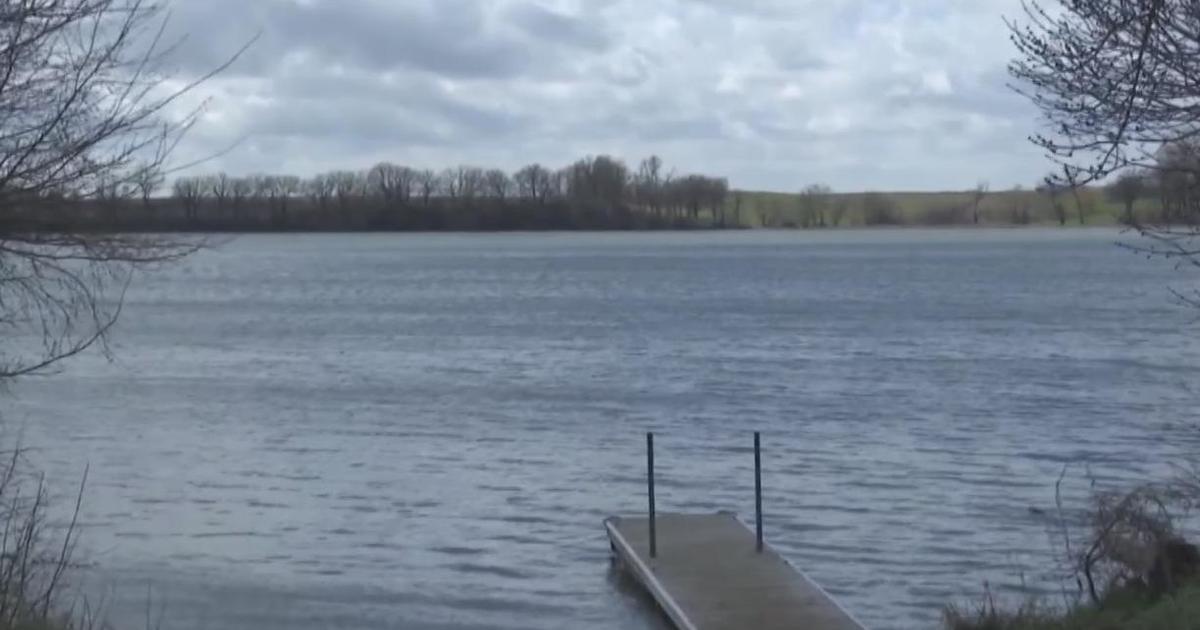Officials Plan Monitoring To Keep Carp From Lakes
TRAVERSE CITY, Mich. (AP) -- Federal and state officials outlined a series of projects Monday to pinpoint how far Asian carp have advanced toward the Great Lakes and remove as many as possible from a Chicago waterway that offers the nuisance fish a direct path to Lake Michigan.
The $7 million initiative calls for continued use of electrofishing, netting and water sampling to detect bighead and silver carp -- or their genetic fingerprints -- on either side of an electric barrier about 25 miles from the lake. New technology will be deployed as well, including an underwater camera to help determine where the carp are gathering and whether any are slipping past the barrier.
"We have to know where these fish are to understand the level of risk that they might enter the Great Lakes," said John Rogner, assistant director of the Illinois Department of Natural Resources. "If we don't know where they are, we're essentially flying blind."
Government agencies have intensified their campaign to prevent Asian carp from establishing a foothold in the lakes since scientists detected their DNA in numerous spots past the barrier in 2009 -- although just one actual carp has been found there. The barrier is in the Chicago Sanitary and Ship Canal, part of an engineered waterway linking the Great Lakes and Mississippi River drainage basins.
Bighead and silver carp, imported to gobble algae from Deep South fish ponds and sewage lagoons, escaped during flooding in the early 1970s and have migrated northward through the Mississippi and its tributaries. Biologists say if they become established in the lakes, the voracious, prolific carp could starve out other species, including salmon, trout and others prized by sport anglers.
The Obama administration has pledged $47 million for carp containment this year. That includes the $7 million for the "monitoring and rapid response plan" announced Monday.
Monitoring for live Asian carp with electrofishing gear and nets will take place twice monthly at five fixed locations above the barrier, while four other sections of the Chicago waterway will be checked seasonally. Water samples will be studied weekly for carp DNA on both sides of the barrier and in the nearby Des Plaines River, with a focus on spots closest to Lake Michigan.
Scientists will sample the waterway network for eggs and larvae that would shed light on where the carp are spawning. The latest evidence has turned up no signs of breeding carp within 130 miles of Lake Michigan, said Charles Wooley, deputy regional director of the U.S. Fish and Wildlife Service.
It's crucial to keep tabs on how far north the carp are spawning because a U.S. Army Corps of Engineers report in March suggested the electric pulses given off by the barrier might not deter juvenile fish just a few inches long.
Agencies will continue hiring commercial fishermen to net Asian carp when found. Since fishing resumed following the spring ice thaw on the waterways, crews have landed 9,862 Asian carp below the barrier -- already exceeding the 6,028 caught in 2010, said Chris McCloud, spokesman for the Illinois DNR.
The officials said they remain convinced there are few if any Asian carp above the barrier and said there's no evidence any have reached Lake Michigan itself.
If carp are discovered beyond the barrier, "we'll immediately deploy all our crews and hit that stretch of river very hard with all our tools," Rogner said. Rotenone, a fish poison, could be spread if there's reason to believe there are more than a handful of carp in the area, he said.
Projects to test the effectiveness of the barrier include tagging Asian carp and other species to see if any get through, plus the underwater camera surveillance.
Teams are working on more effective nets for catching the elusive carp. Also under development are substances that can be placed in the water to attract or repel the fish and "hydroguns" that emit high-pressure underwater sound waves to scare them away.
"By unifying federal and state action, conducting vigilant monitoring, and developing and using cutting edge technologies, we are ensuring the most coordinated and effective response" to the carp threat, said John Goss, director of the White House Council on Environmental Quality's Asian carp program.
Sen. Debbie Stabenow, a Michigan Democrat, said the planned steps would provide short-term help. But the only way to fully protect the Great Lakes is to sever their man-made link with the Mississippi watershed as sought by Michigan, Minnesota, Ohio, Pennsylvania and Wisconsin in a federal lawsuit, she said.
"We don't have time to lose," Stabenow said. "We need a comprehensive action plan to stop Asian carp permanently and we need it now."
(© Copyright 2011 The Associated Press. All Rights Reserved. This material may not be published, broadcast, rewritten or redistributed.)
Biologists say if Asian carp become established in the Great Lakes, they could starve out other species.



